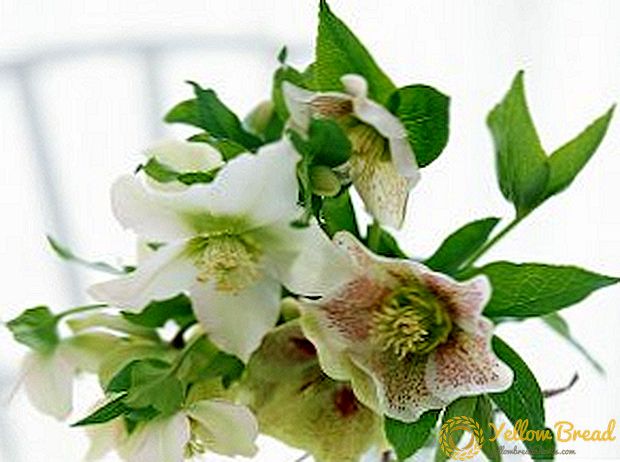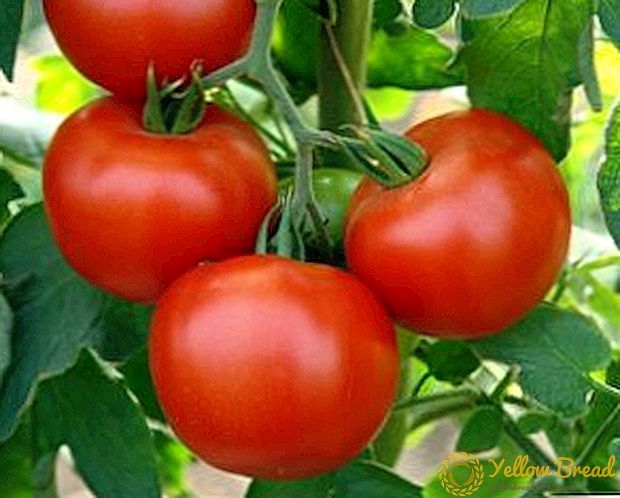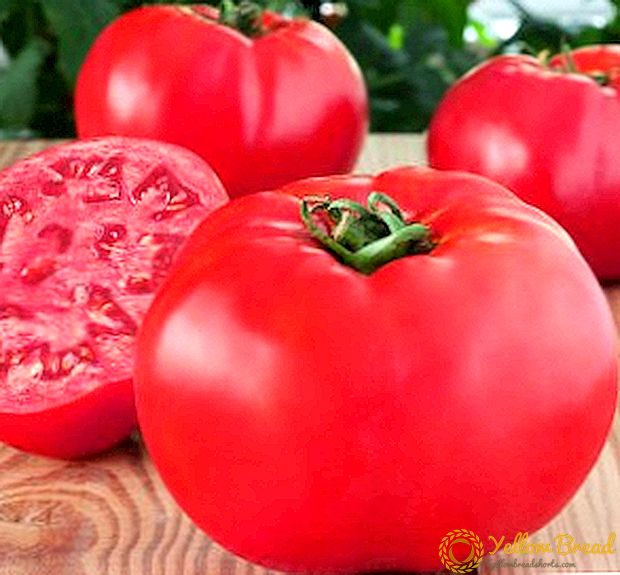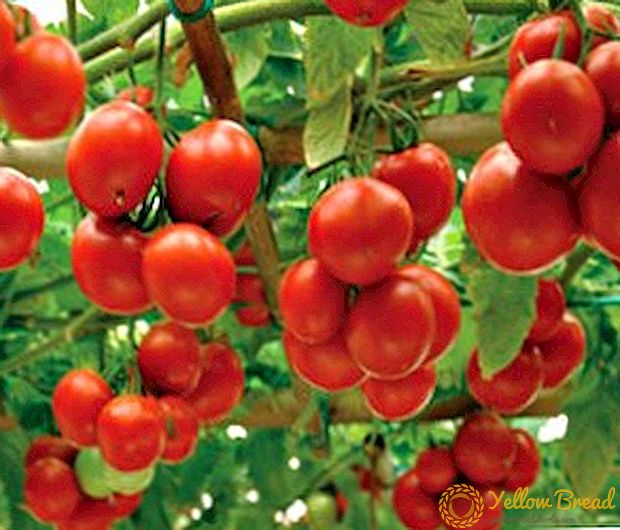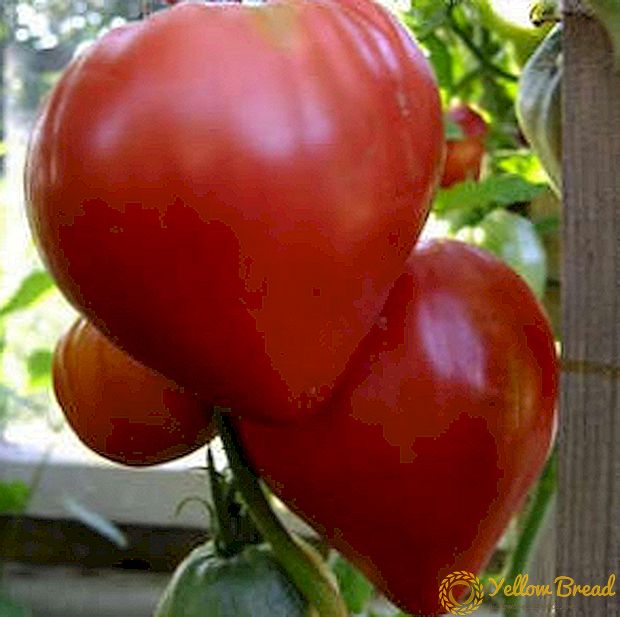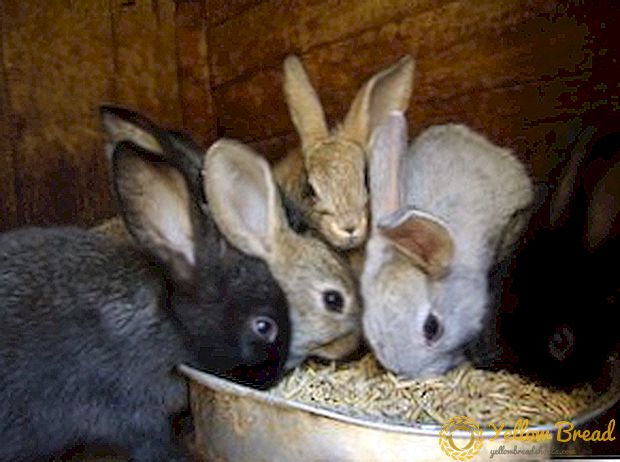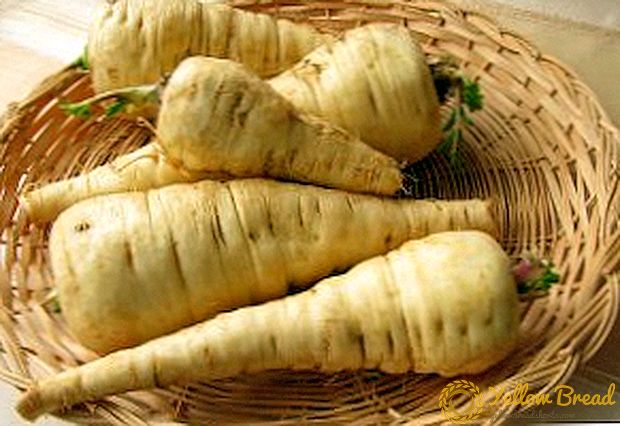 Parsnip is a vegetable, and not only quite tasty, but also very useful. However, its cultivation on the home bed has a number of subtleties, without which it is impossible to obtain large fruits. It is about such nuances in the cultivation of parsnips, and we describe below.
Parsnip is a vegetable, and not only quite tasty, but also very useful. However, its cultivation on the home bed has a number of subtleties, without which it is impossible to obtain large fruits. It is about such nuances in the cultivation of parsnips, and we describe below.
- Planting parsnips for seedlings
- How to prepare the seeds before planting?
- Soil for parsnip
- Sowing Parsnip Seeds
- Seedling care
- Planting seedlings of parsnip in the open ground
- Time for planting seedlings
- Choosing a place for landing
- Planting seedlings in the garden
- Tips for caring for parsnips in the open field
- How to water parsnips?
- How to feed parsnips?
- Parsnip harvest and storage
- How to deal with pests and diseases of parsnip?
Planting parsnips for seedlings
Features of cultivation of parsnip in the country largely depend on such features of vegetables as a long growing season. If in the middle lane, in which Ukraine is located, it’s too early to sow its seeds in open ground, then by the fall you will collect very small roots, which simply did not have time to form because of the cold weather that did not recede.For this reason, the plant is recommended to sow at first for seedlings, which at the end of spring can be planted without problems on the beds.
 Another reason why it is recommended to plant a parsnip for seedlings is the long germination of seeds, which also have a very low germination rate. As a result, planting is rare, and the harvest is not happy with plenty.
Another reason why it is recommended to plant a parsnip for seedlings is the long germination of seeds, which also have a very low germination rate. As a result, planting is rare, and the harvest is not happy with plenty.
However, when planting plants for seedlings, it should be remembered that it is very sensitive to transplants and may die even with minor damage to the roots. Therefore, before the direct sowing of seeds, it is important to prepare separate pots for each plant.
How to prepare the seeds before planting?
As already noted, parsnip seeds germinate very badly, so they need special preparation before sowing, which can be done in different ways. The easiest way is to soak the seeds in warm water for a day, while regularly changing the water so that it always remains warm.After that, slightly swollen seeds should be well process with growth stimulants, which are ideal drugs:
- "Appin";
- "Heteroauxin";
- "Cycron".
 You can also soak the seeds in a solution of ash (20 g of ash per 1 l of water). Keep them in it should be within 48 hours, after which you should wash the seeds with warm water, dry a little and you can go to the landing. After sowing, seedlings may appear on the 10-12th day, although it is quite normal for a parsnip if they appear on the 18th day.
You can also soak the seeds in a solution of ash (20 g of ash per 1 l of water). Keep them in it should be within 48 hours, after which you should wash the seeds with warm water, dry a little and you can go to the landing. After sowing, seedlings may appear on the 10-12th day, although it is quite normal for a parsnip if they appear on the 18th day.
Soil for parsnip
The cultivation of parsnip requires the use of peat, loamy or pitfall soil for the plant (and it is better to use a mixture of them). But at home it is easiest to buy a soil mixture prepared on the basis of peat and having good friability. If you are preparing the soil for parsnip yourself, do not forget to sift it through a sieve before sowing seeds. It is also important to disinfect the "home" soil, for which you can hold it over the steam or put it in the oven.
Sowing Parsnip Seeds
The first thing you need to figure out is when exactly to sow the parsnip on the seedlings.The best option is considered mid-end of March, however, the sooner you make the crops, the better the seedlings will be formed before they are transplanted into open ground. If you sow the seeds at the end of March, then by mid-May, the seedlings will be suitable for planting. 
The prepared soil is poured into pots and compacted a little, leaving about 1 cm to the edge of the pot. After that, it is watered, and 2-3 seeds are placed in each pot, still covered with a layer of soil. To speed up the seedlings, it is recommended to tighten the foil, but then it is necessary to air them daily, removing the shelter for 7-10 minutes. Since the parsnip is cold tolerant, the seed containers do not have to be kept warm, although sunlight is mandatory for the parsnip, especially when the first shoots start to appear from the pots.
Seedling care
Parsnip- a vegetable, characterized by simple planting and care, which is applicable to its seedlings. Care of the seedlings of parsnip includes only three mandatory aspects:
- additional lighting, if the duration of the day does not exceed 14 hours (for highlighting it is necessary to use special lamps for plants);
- moderate watering;
- the absence of stagnant moisture in the pots with seedlings (to prevent this, be sure to make holes in the pots or, before sowing the seeds, put claydite to the bottom).
Planting seedlings of parsnip in the open ground
It is important to perform this process very carefully, since if you follow the rules below, you risk damaging the seedlings, which will eventually die and will not yield a harvest.
Time for planting seedlings
 The timing of planting seedlings of parsnip depends largely on the region of your residence and weather conditions. If the soil in the beds does not warm up to + 4 ° C, then it will be possible to hesitate for a long time with planting, although it is usually carried out in the second half of May, when the seedlings are already 28-30 days old. At the same time, the timing of planting of parsnip in the spring is better not to tighten much, because during late planting the plant will not have time to form large roots.
The timing of planting seedlings of parsnip depends largely on the region of your residence and weather conditions. If the soil in the beds does not warm up to + 4 ° C, then it will be possible to hesitate for a long time with planting, although it is usually carried out in the second half of May, when the seedlings are already 28-30 days old. At the same time, the timing of planting of parsnip in the spring is better not to tighten much, because during late planting the plant will not have time to form large roots.
Choosing a place for landing
Pasternak grows well in beds with loose soil, which should contain a lot of peat. If the soil is acidic, it is impossible to plant the parsnip in it, or you will have to lime well before planting.
The bed itself should be in a sunny place, although the penumbra also can not deprive you of the harvest. In no case do not choose for the parsnip beds, which grew:
- carrot;
- parsley;
- parsnip;
- celery.
 It is best to grow parsnip in the open field, in the beds after onions, beets, cabbage and potatoes. In addition, it is better to fertilize the site before planting the parsnip since autumn, so that by spring all the fertilizers are well dissolved in the soil and accessible to the plant. In the spring, it is also important to dig up a bed and remove weeds from it, forming high mounds of earth under the plants.
It is best to grow parsnip in the open field, in the beds after onions, beets, cabbage and potatoes. In addition, it is better to fertilize the site before planting the parsnip since autumn, so that by spring all the fertilizers are well dissolved in the soil and accessible to the plant. In the spring, it is also important to dig up a bed and remove weeds from it, forming high mounds of earth under the plants.
Planting seedlings in the garden
Pasternak does not like excessive thickening of the landings, therefore for its landing it is necessary to prepare a series of holes at a distance of 10-12 cm from each other. At the same time, the distance between the rows of plants should be equal to 40 cm (we prepare the holes rather large, since the seedlings will be placed in them together with peat pots).After transplantation, the soil around the pot is compacted and watered.
If you sowed seedlings in plastic pots, then during planting it is better to cut them and get the parsnip with a clod of earth (if it’s a bad cut, just pour plenty of the plant so that it drops out of the pot together with the seedling). Try to transplant does not damage the seedlings, as it may not settle down in a new place.
Tips for caring for parsnips in the open field

Pasternak requires care in the open field, which consists of several simple manipulations. - removal of weeds, regular loosening of the soil (what to do after each moisture hit the garden bed), watering and feeding. However, in these matters the plant also has its own needs.
How to water parsnips?
Pasternak is quite moisture-loving, so during the formation of the root crop the plant needs to be watered quite often, although not abundantly. If he does not have enough moisture, the color of the leaves will become pale, and the plant itself will slow down in growth. Very often, on dry soil, parsnip starts an arrow, due to which a root crop does not form. If this does not happen, the lack of moisture can cause cracking of the root, making it fibrous and dry.
Nevertheless, although the watering of parsnip should be frequent, it is by no means plentiful. After all, if the garden will stagnate moisture, roots can become infected with fungus. I.e, if the summer is rainy, then the plant may not need watering. The main thing after each introduction into the soil of the liquid is to loosen it, so that the root crop constantly receives air.
How to feed parsnips?
Pasternak at the dacha also needs periodic feeding, which for the entire growing season of the plant should be carried out no more than 4 times.
In the process of fertilizer must take into account such rules:
- Pasternak is fed only with liquid fertilizers, in the role of which you can use mullein diluted with water 1:10. It can be replaced with a solution of ash or minerals.
- The first feeding is carried out after two weeks from the date of transplanting, the second - after a three-week period. With both feedings, preference should be given to fertilizers with a high nitrogen content.
- The third feeding is carried out in the second half of July, the fourth - in 2-3 weeks. When performing all supplements, you should use fertilizers with a high content of potassium and phosphorus.
 It should be noted and the fact that not always parsnips need fertilizer. If the soil in the garden is quite nutritious and at the same time you managed to fertilize it in the fall, then the plant will not need additional dressing.
It should be noted and the fact that not always parsnips need fertilizer. If the soil in the garden is quite nutritious and at the same time you managed to fertilize it in the fall, then the plant will not need additional dressing.Parsnip harvest and storage
As soon as you notice that the parsnip leaves start to dry out and turn gray, you can start collecting its root vegetables. But if the parsnip remains in the soil almost until the first frost, it will only benefit him. The roots of the plant can be large, so get them out of the ground better with pitchforks, trying not to damage the vegetable itself. It is better to work with gloves in order not to burn the tops.
Parsnips are stored similarly to carrots - at a temperature of 0 + 2˚С, in a room with a humidity of 80-85%. One should also be prepared for the fact that in the cellar one way or another the parsnip will become soft. Therefore, if you live in the southern areas, the roots of this plant can be dug up immediately for human consumption, as they are quite resistant to cold weather.
How to deal with pests and diseases of parsnip?
Pasternak, in addition to proper sowing and care, requires the control of pests, of which the plant is quite a lot.
Among the most characteristic diseases there are:
- septoriosis;
- wet bacterial rot;
- black rot;
- chalcosporosis;
- white and gray rot.
These diseases can manifest themselves through dark spots on the roots or dried leaves. In order to prevent the development of fungi, you should adhere to the following rules in advance:
- Sow the parsnips on the same bed at intervals of at least 3-4 years and do not forget to follow their predecessors.
- Follow the rules of agrotechnics described above, paying particular attention to watering.
- Before planting on the beds of the parsnip seedlings, all weeds should be removed.
- Bordeaux fluid (solution 1%);
- Fundazole;
- Topsin-M

- Caraway moth, the main purpose of which are the roots, stalks and leaves. To remove this dangerous goose, the plant should be treated with a special broth prepared from 3.5 kg of tomato tops and 10 liters of boiling water (to insist for two days). In addition to the tops, you should also add about 40 grams of ordinary laundry soap, previously grated, to the solution, which will help it dissolve better.
- Field bug whose larvae feed on plant sap. During the growing season of the plant, up to 4 generations of bedbugs may appear, which are able to completely dry the plant. To combat it, treat parsnip with Karbofos or Actellic.
- Aphid is the most dangerous for parsnip, as it can almost completely destroy the planting. In addition, it is this pest that acts as a source of various diseases. To destroy it, use "Antitlin", "Biotlin" and the drug against the Colorado potato beetles - "Confidor".

